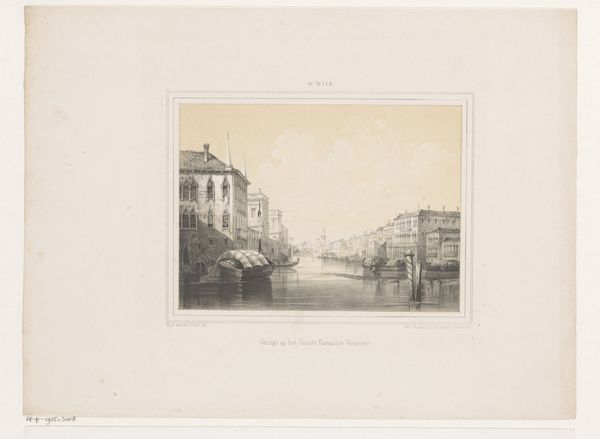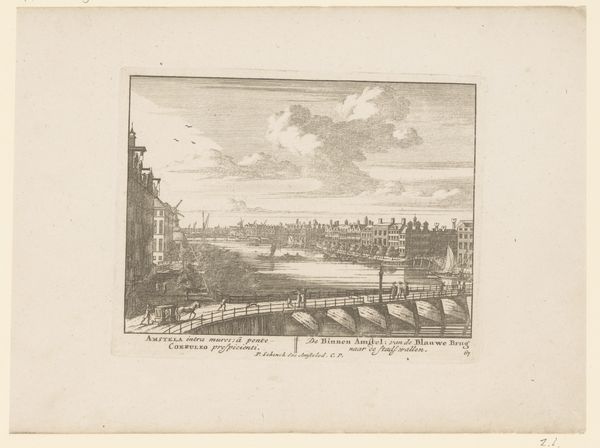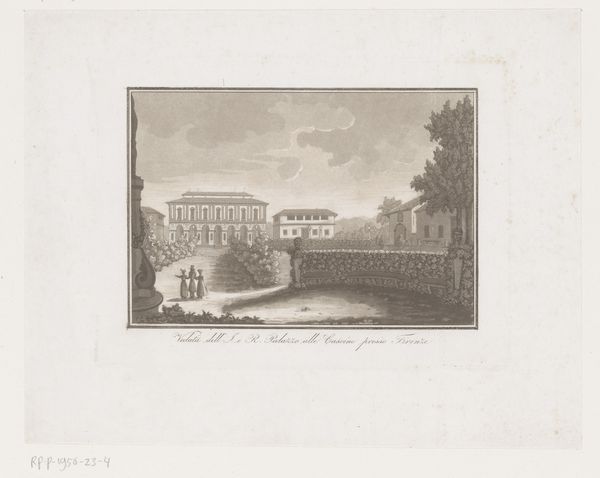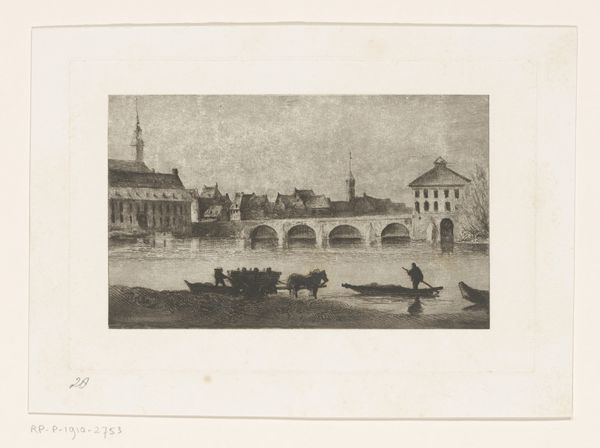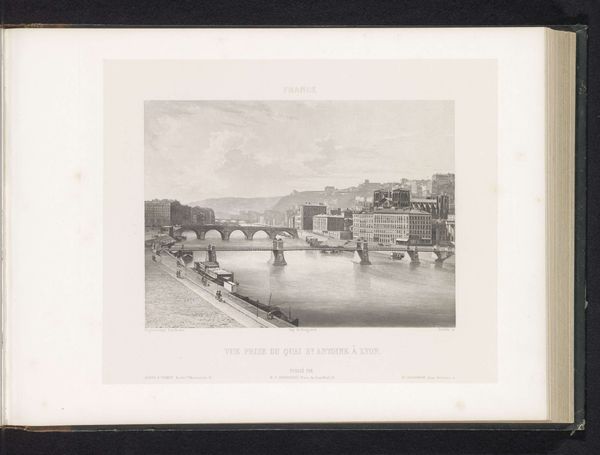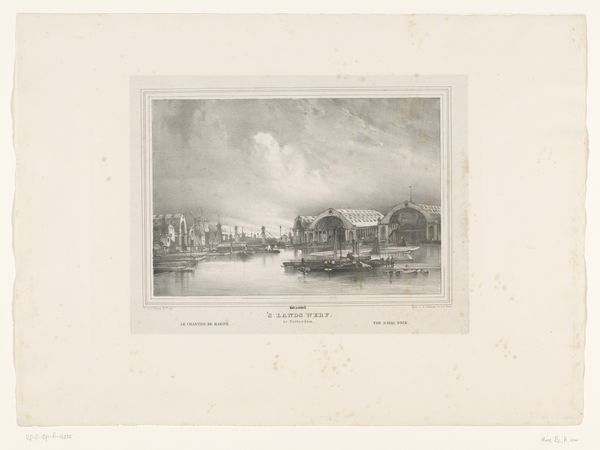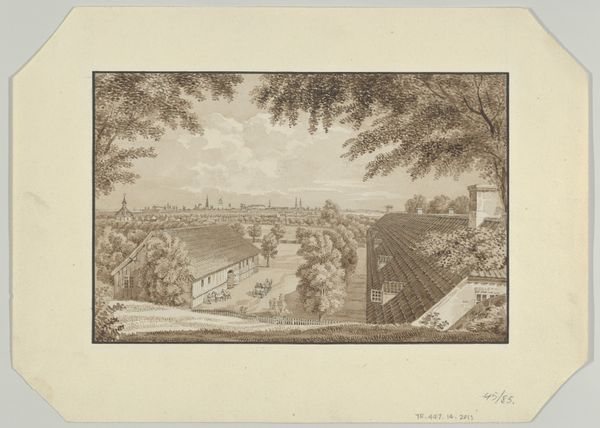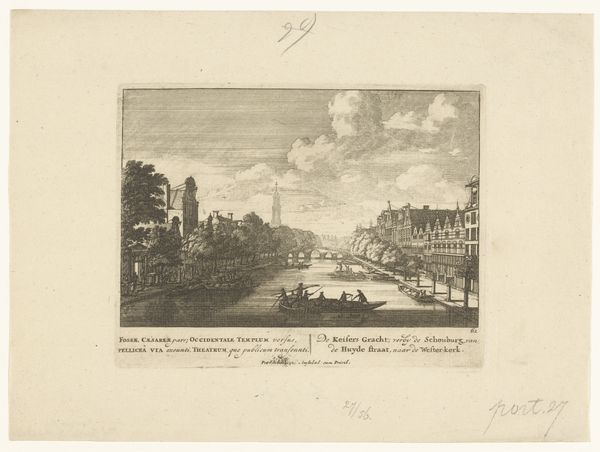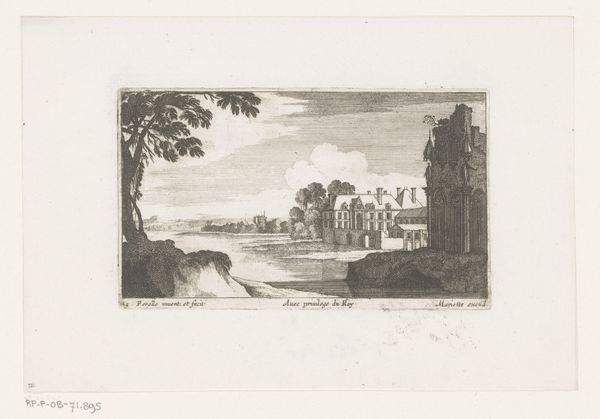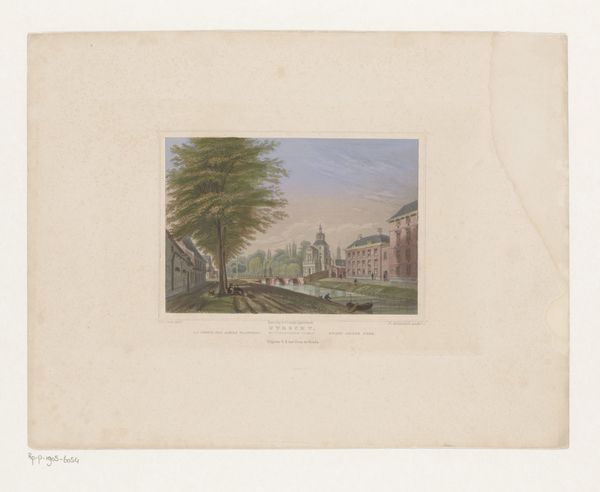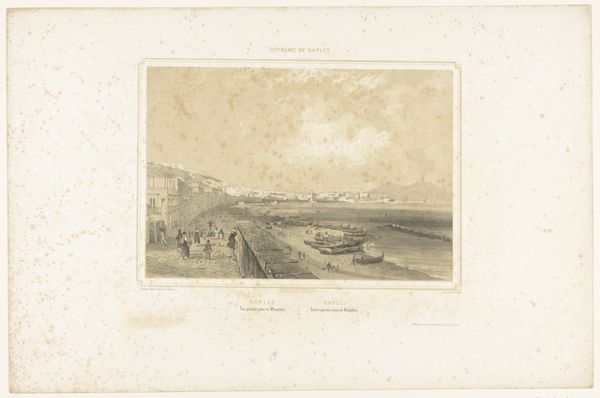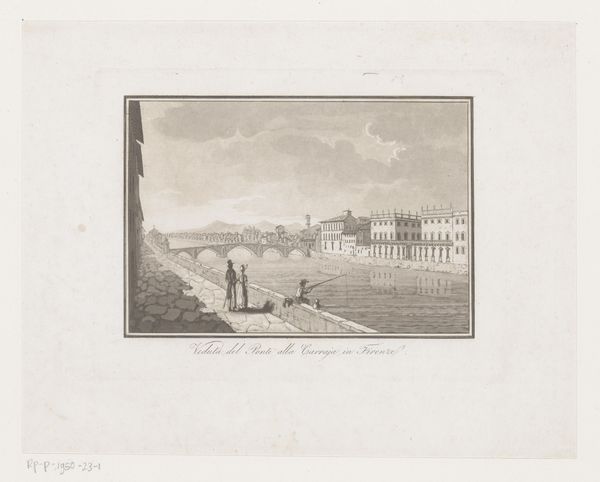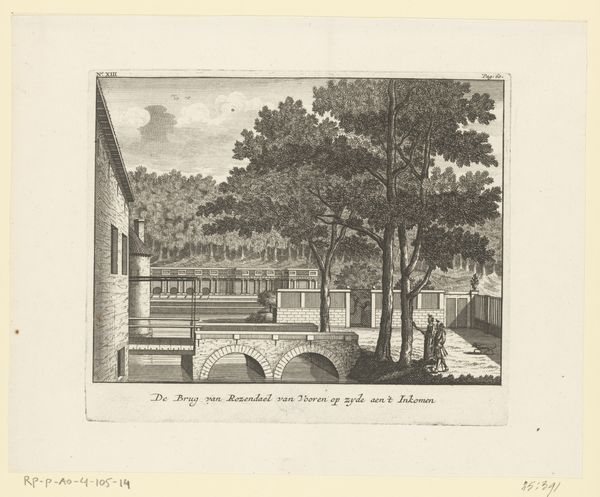
drawing, print, etching, pencil, engraving
#
drawing
#
neoclacissism
# print
#
etching
#
pencil sketch
#
old engraving style
#
landscape
#
pencil drawing
#
pencil
#
cityscape
#
engraving
Dimensions: height 159 mm, width 212 mm
Copyright: Rijks Museum: Open Domain
Editor: This print, “Gezicht op Ponte Vecchio in Florence” by Giuseppe Molini, created between 1790 and 1856, is a cityscape rendered in pencil and etching. It's a very controlled, almost idealized view. What catches your eye, how do you interpret this kind of formal presentation? Curator: Immediately, the bridge becomes more than just architecture. Ponte Vecchio, laden with its history of commerce and survival, transforms into an emblem of resilience. Notice how Molini meticulously renders the shops clinging to the bridge. Each detail acts like a hieroglyph, whispering stories of trade, family, and the passage of time. What emotions do you connect with as you gaze at this enduring bridge? Editor: I feel a sense of calm, almost detachment. The detail is incredible, but the even tone flattens any drama. It feels more like a document than a feeling. Curator: But consider this supposed 'detachment' as a specific aesthetic and message. The Neoclassical movement valued order and reason after periods of revolution. Think of Jacques-Louis David's paintings; the clarity signifies control. Similarly, in Molini's view, isn't there a deeper statement being made about the importance of stability, seen through this meticulously etched rendition of a timeless bridge? The bridge literally and symbolically connects the past and present. Editor: That’s a great point! I was only seeing the style, not its deeper symbolic purpose in the era. Curator: The image echoes memory, suggesting the enduring strength of human connection and culture, visible in this bridge and its reflections over time. Every arch is not only architectural; each repeats, and amplifies shared memories. What about its reflections within yourself now? Editor: Now I see so many layers! I understand better how artistic choices reflect bigger historical and cultural movements. Thanks!
Comments
No comments
Be the first to comment and join the conversation on the ultimate creative platform.
